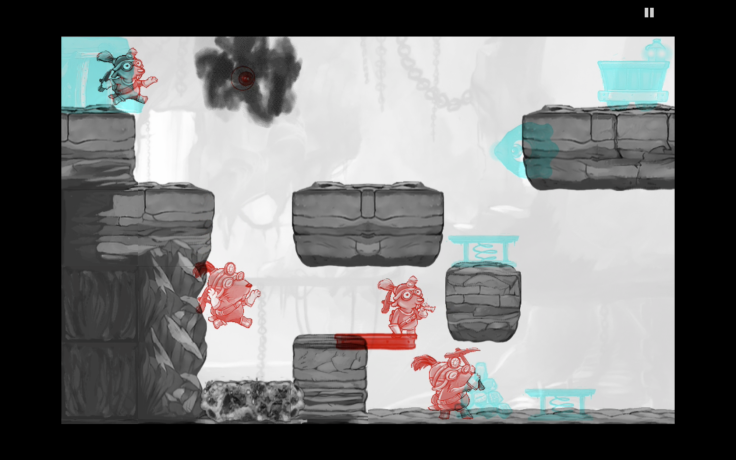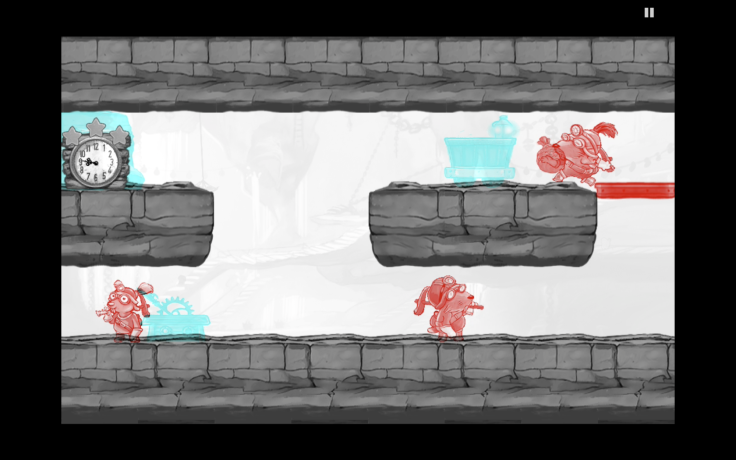Ubisoft's 'Dig Rush' Treats Lazy Eye Through Video Game Treasure Hunt

Video games could soon be as common in a doctor's office as they are at home. Amblyotech, a company that develops therapies to treat amblyopia, or lazy eye, believes video games are the answer. Amblyopia affects up to 3 percent of children around the world, with treatments ranging from an eye patch to invasive surgery. Looking at how technology could improve treatment, Amblyotech and Ubisoft, makers of "Rayman" and "Assassin's Creed," developed "Dig Rush," a video game that trains the brain to use both eyes.
"Dig Rush" is a game that's "easy to pick up and play but a little harder to master," Mathieu Ferland, senior producer at Ubisoft, said. "You control these little moles that are digging into the ground for mines and looking for gold and treasure. It's puzzle-type game and the more gold you get, the more you can improve your skills. Add more moles to get more gold and increase productivity." It seems like a simple platform that could be quite addictive, but "Dig Rush" won't be found on smartphones. Instead, the game will be used to treat lazy eye.
Amblyopia affects 9 million children in the U.S., Joseph Koziak, CEO of Amblyotech, said. "Lazy eye develops when nerve pathways between the brain and the eye aren't properly stimulated," the Mayo Clinic explains. "As a result, the brain favors one eye, usually due to poor vision in the other eye. The weaker eye tends to wander. Eventually, the brain may ignore the signals received from the weaker -- or lazy -- eye."
An eye patch is the most common form of treatment, but it leaves the eye prone to relapse and there is a stigma attached to the procedure. The treatment does not train the brain to help correct the vision disorder. "When you talk to individuals, everyone has a relative or a friend or a co-worker that is somehow affected by amblyopia," Koziak said. "It is a debilitating disorder in that patients have a very difficult time performing day-to-day activities such as participating in sports or placing a cup on a table."

With "Dig Rush," both eyes are trained using a tablet and red-and-blue 3D glasses. "The goal in developing 'Dig Rush' was to create an environment where both eyes are being used together and the possibility of relapse was greatly diminished. The other benefit we are seeing from our clinical work -- which has included 200,000 patients -- is the treatment works equally well with children and adults," Koziak said.
The game uses red and blue elements to give both eyes a proper workout. "In some portion of the game, maybe the main characters are going to be targeted to one eye while the enemies will be targeted to the other eye," Ferland said. "I wish I could have taken a full, open world game like 'Assassin's Creed.' But we needed to follow this known protocol where the pacing of the objects on the screen need to move quite slow."
Gameplay can be adjusted to the patient by changing the contrast within the game via technology developed at McGill University. The game adapts along with the patient throughout the treatment -- around one hour a day for six weeks -- and the trials have shown 90 percent recovered their binocular vision. Koziak calls the iPad the "syringe of the future" and believes future treatments could use the tablet to treat other disorders.
"Dig Rush" needs approval from the Food and Drug Administration before it can be prescribed to treat amblyopia.
"As a game producer, it's pretty cool. It's a very nice demonstration of the positive impact video games may have on people's lives," Ferland said. "I'm very excited knowing this game has the potential to change the sight of millions of people worldwide."
© Copyright IBTimes 2024. All rights reserved.






















